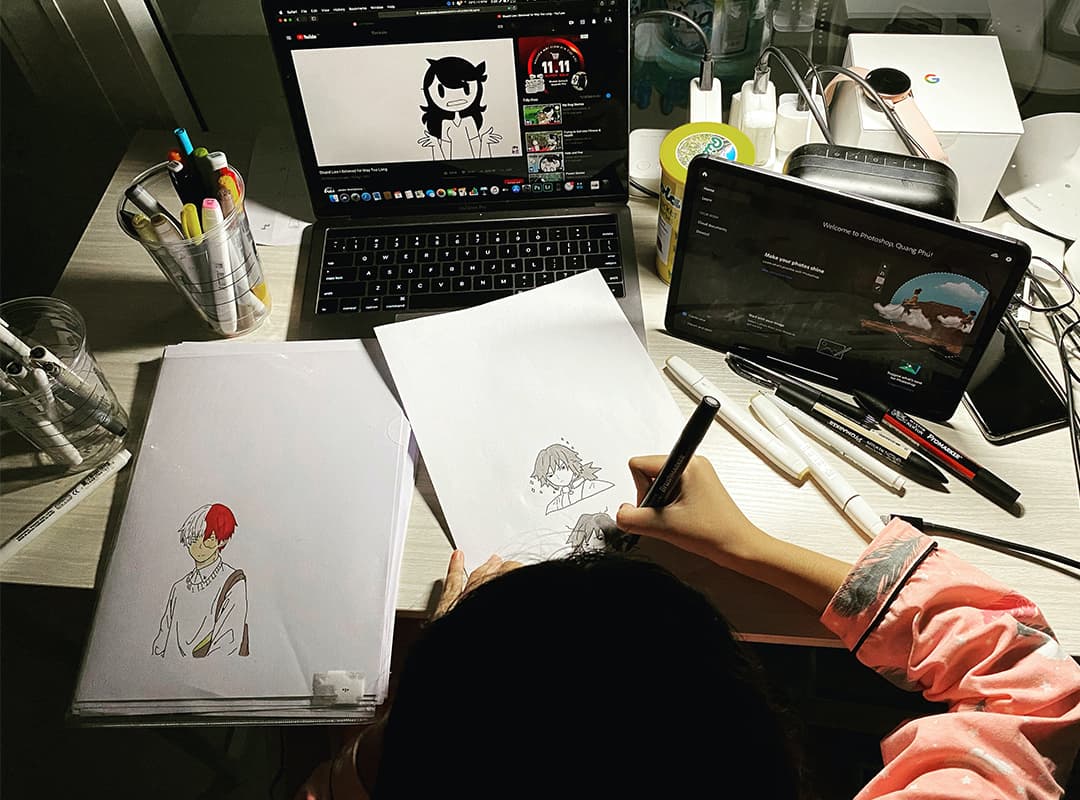Illustration is one of the most important elements of children’s books, as it helps to ignite interest in reading from an early age. Successful children’s books have an original style and visual appeal, and the illustrations themselves enhance the story and bring it to life in children’s imaginations. At the same time, there are many beautiful and colorful books, but children are not interested in reading and looking at them: some are too overloaded with details, while others have illustrations that do not match the plot.
So the illustrator has a lot to learn. And we are here to go through this journey with you. We’ll start with the basics: you’ll analyze the theoretical basis and learn about the structure and features of an illustrated book. Then, under the guidance of a mentor, you will come up with your own story step by step: write a plot, create characters and the world in which they live. After that, the fun begins! You will develop a line of characters, make the first sketch of the spread and the entire book layout, work with color schemes and design, and finally create the cover.
WHAT DO WE STUDY IN THE CLASS?
Week 1.
Functions and tasks of children’s books;
● history of children’s book publishing: evolution of illustration, modern children’s illustration
● the tasks of an illustrator when creating a book;
● picture book: what it is, what it consists of, and how it differs from other children’s books.
Week 2.
● Analyzing the task of an illustrator: what questions need to be answered before starting to create a book;
● Idea search and research: how to come up with your story, where to look for ideas, and how to store them
● creating main and secondary characters and their artistic images
Creating the world around the characters, the concept of circular world building;
● history and background, character development, and working with text.
Week 3
● character system: how to describe appearance and character for each category of characters;
● why you need a moodboard and how to create one: finding references and working with them;
● Character lineup: working with shapes and proportions on the example of books and animation projects;
● stylizing characters and objects, working with simplification, humanizing animals.
Week 4
● book format and its types, layout and technical requirements for book layouts;
Types of book illustrations and their design in the layout;
work with storyboarding, rhythm and composition;
● planning and angles in illustration.
Week 5
Theory of color and tone, as well as brightness and saturation in illustration;
● color harmonies, complementary colors, contrast and classical triads;
● color perception, types of contrasts and examples of their use;
● tone and tonality, dividing illustrations into plans using tone.
Week 6
● color accents, examples of their use in books;
● selection of color palette: mood of the book, harmony on the spread, negative space.
Week 7
Calligraphy, lettering and typography;
● hierarchy of fonts, examples of text arrangement in children’s books;
● how fonts make an impression: finding and creating a font;
● types and types of book titles: how to come up with your own.
Week 8
Types of covers and bindings, examples of design;
● rhythm in a book and examples of its use;
● design of the flyleaf and endpaper;
● types of paper, types and requirements for printing;
● Basic layout in InDesign.
Week 9
Presentation of the project for the portfolio, work with mockups;
● how to prepare a project for publication on Behance and where else it can be shown;
● methods of publishing a book: self-publishing, crowdfunding, publishing houses;
● types of rights and licenses: what to look for when signing a contract;
● instructions on how to publish your book on Amazon;
● thesis assignment.
